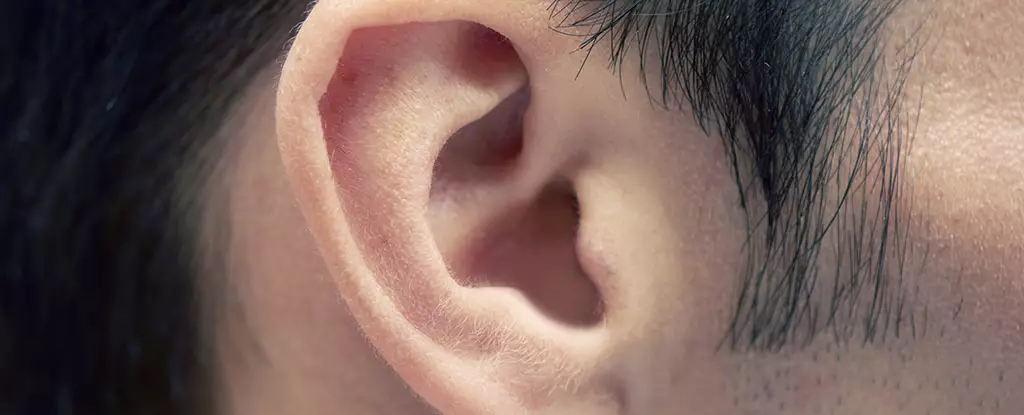Parkinson’s disease remains a mysterious adversary, often diagnosed too late for effective intervention. The quest for early detection is more than a medical ambition—it’s a social imperative, promising not just better patient outcomes but crucial advances in therapeutic research. Recent studies revealing that chemical signals associated with Parkinson’s might be found in earwax volatile organic compounds (VOCs) represent a thrilling leap forward. Unlike traditional methods reliant on clinical evaluation and costly brain imaging, this approach suggests a future where a simple ear swab could provide rapid, non-invasive screening. It’s a breakthrough that could democratize diagnosis, making it accessible in resource-limited settings and accelerating the identification of the disease at its nascent stages.
The Science of Odor and Disease: How Earwax Reveals More Than We Thought
Earlier findings hinted that Parkinson’s changes the body’s odor profile, linked to altered sebum production. However, sebum’s contact with the environment complicates its use as a reliable biomarker. The innovation here is the strategic focus on earwax—a naturally protected substance less tampered by external factors. By analyzing VOCs such as ethylbenzene, 4-ethyltoluene, pentanal, and 2-pentadecyl-1,3-dioxolane, researchers identified chemical fingerprints potentially specific to Parkinson’s pathology. This insight is fascinating, underscoring that neurodegeneration’s ripple effects extend beyond the brain to peripheral biochemical processes. It suggests that the disease’s footprint is wider and more accessible than conventionally assumed, opening new avenues for early intervention.
Artificial Intelligence: Hype or Genuine Hope?
The study’s deployment of AI to analyze earwax VOC profiles adds a powerful technological dimension. Achieving a touted 94.4 percent accuracy in distinguishing Parkinson’s patients is impressive on paper. Yet, this must be approached with cautious optimism. The study’s sample size of 209 is modest, and AI systems are notoriously sensitive to the quality and diversity of their training data. Overfitting, demographic biases, and false positives remain genuine risks. Before heralding this as a clinical game-changer, extensive validation across diverse populations and longitudinal studies are essential. Still, integrating AI into biochemical diagnostics is undeniably forward-thinking, blending bioinformatics and sensory science—a convergence poised to revolutionize neurological disease detection.
Challenges Beyond the Lab: From Promising Data to Practical Tests
While the findings hold potential, the path from discovery to routine clinical use is fraught with hurdles. The reproducibility of VOC signatures across ethnicities, disease stages, and environmental exposures remains an open question. Parkinson’s is notoriously heterogeneous, and biomarkers must be robust enough to capture this diversity. Additionally, regulatory approval for new diagnostics demands rigorous evidence and clear demonstration of added value over existing standards. Without thoughtful navigation of these challenges, promising science risks languishing in the laboratory rather than delivering real-world impact. Furthermore, ethical considerations about data privacy, patient consent, and AI decision-making transparency cannot be sidelined in pursuit of technological enthusiasm.
A Pragmatic Liberal Perspective on Innovation and Equity
From a center-left liberal viewpoint, this research embodies the kind of innovation public policy should champion—those that promise accessible, affordable healthcare breakthroughs without exacerbating disparities. If refined into a reliable diagnostic tool, earwax analysis could reduce dependence on costly imaging and specialist consultations, often inaccessible to marginalized communities. However, vigilance is needed to prevent the commercial exploitation of such technologies that might price out vulnerable populations or create digital divides in healthcare delivery. Equally important is sustained public investment in such research, ensuring it is not solely dictated by market forces but steered by public health priorities, transparency, and equitable distribution.
Implications for Understanding Parkinson’s At Its Roots
Perhaps most intriguing is the broader biological insight this line of research offers. The altered VOCs don’t merely serve diagnostic ends—they may illuminate the biochemical cascades predating visible symptoms, hinting at underlying inflammatory and cellular stress processes. This could reshape how scientists conceptualize Parkinson’s onset, shifting from purely neurological degeneration to an integrated systemic perspective. Such paradigm shifts are vital, fostering novel therapeutic targets and preventative strategies that address early disease mechanisms rather than only symptom management.
The Road Ahead: Cautious Enthusiasm and Rigorous Validation
The discovery of Parkinson’s signatures in earwax is emblematic of modern medicine’s quest for non-invasive, rapid diagnostics bolstered by cutting-edge AI. Yet, as exciting as these initial findings are, they must not be prematurely feted as definitive cures or universal diagnostic tools. The research community must prioritize replication, inclusivity, and transparency. Only through broad validation and ethical deployment can this promising approach translate into tangible benefits for patients worldwide, potentially transforming Parkinson’s from an often silent, late-recognized condition into one detected early enough to alter its devastating trajectory.


Leave a Reply